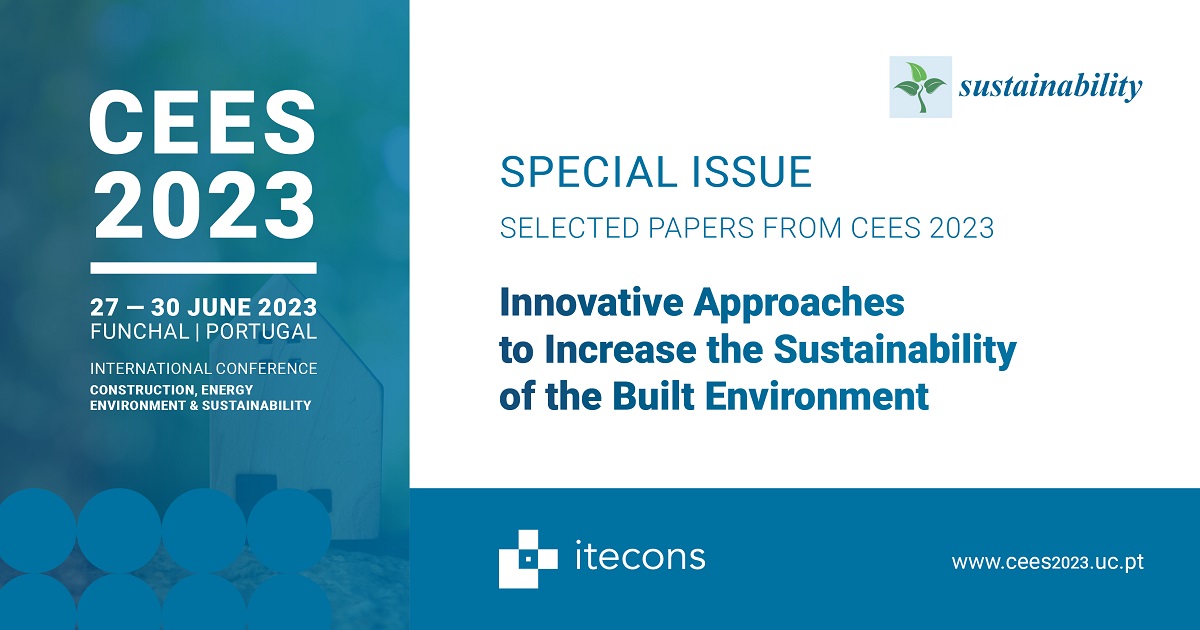Innovative Approaches to Increase the Sustainability of the Built Environment
A special issue of Sustainability (ISSN 2071-1050). This special issue belongs to the section "Green Building".
Deadline for manuscript submissions: closed (27 March 2024) | Viewed by 62766

Special Issue Editors
Interests: eco-friendly building materials; sustainable construction; life cycle assessment; environmental chemistry
Special Issues, Collections and Topics in MDPI journals
Interests: building acoustics; sustainable building materials; materials characterization; numerical simulation of wave propagation
Special Issues, Collections and Topics in MDPI journals
Interests: green roofs and walls; environmental performance; eco-design; sustainable construction materials
Interests: water resources management; sustainable water supply and drainage systems; environmental impact assessment
Special Issue Information
Dear Colleagues,
This Special Issue is related to the second International Conference on Construction, Energy, Environment and Sustainability (CEES 2023) organized by Itecons, University of Coimbra (Portugal), in collaboration with CONST-NRC (Canada), that will take place in Funchal (Madeira Island), Portugal, from 27 to 30 June 2023.
Globally, as we face resource scarcity, climate change and increased urbanization, there is a pressing need to develop more sustainable construction practices and a more sustainable built environment. Increased population and urbanization have undoubtedly led to negative effects on the environment and contributed greatly to climate change. From resourcing and construction to the use of infrastructure and disposal of waste, the built environment is responsible for significant biophysical, economic, and social impacts. In this context, environmental engineering and management activities are crucial for assessing and minimizing these impacts, as well as for enabling climate change adaptation. Along with the protection of the environment, economic viability and social equity are commonly referred to as the two other pillars of sustainability. Hence, the social aspects of buildings and urban development must not be neglected when striving towards a more sustainable built environment.
In this Special Issue, we are looking for high-quality original research articles related to the following topics:
- Resilience and adaptation to climate change
- Environmental risk management
- Waste recovery and management
- Eco-design and circular economy
- Life cycle assessment of products and buildings
- Nature-based solutions
- Green roofs and living facades
- Adaptive building skins
- Water efficiency and management
- Water–energy nexus
- Sustainable supply and drainage systems
- Sustainable urban planning
- Environmental noise
- Urban metabolism
- Smart cities
We look forward to receiving your contributions.
Dr. João Almeida
Dr. Julieta António
Dr. Andreia Cortês
Dr. João Vieira
Guest Editors
Manuscript Submission Information
Manuscripts should be submitted online at www.mdpi.com by registering and logging in to this website. Once you are registered, click here to go to the submission form. Manuscripts can be submitted until the deadline. All submissions that pass pre-check are peer-reviewed. Accepted papers will be published continuously in the journal (as soon as accepted) and will be listed together on the special issue website. Research articles, review articles as well as short communications are invited. For planned papers, a title and short abstract (about 250 words) can be sent to the Editorial Office for assessment.
Submitted manuscripts should not have been published previously, nor be under consideration for publication elsewhere (except conference proceedings papers). All manuscripts are thoroughly refereed through a single-blind peer-review process. A guide for authors and other relevant information for submission of manuscripts is available on the Instructions for Authors page. Sustainability is an international peer-reviewed open access semimonthly journal published by MDPI.
Please visit the Instructions for Authors page before submitting a manuscript. The Article Processing Charge (APC) for publication in this open access journal is 2400 CHF (Swiss Francs). Submitted papers should be well formatted and use good English. Authors may use MDPI's English editing service prior to publication or during author revisions.
Keywords
- sustainable construction
- sustainable built environment
- energy and water efficiency
- environmental noise
- circular economy
- resilience and adaptation to climate changes
Benefits of Publishing in a Special Issue
- Ease of navigation: Grouping papers by topic helps scholars navigate broad scope journals more efficiently.
- Greater discoverability: Special Issues support the reach and impact of scientific research. Articles in Special Issues are more discoverable and cited more frequently.
- Expansion of research network: Special Issues facilitate connections among authors, fostering scientific collaborations.
- External promotion: Articles in Special Issues are often promoted through the journal's social media, increasing their visibility.
- Reprint: MDPI Books provides the opportunity to republish successful Special Issues in book format, both online and in print.
Further information on MDPI's Special Issue policies can be found here.








